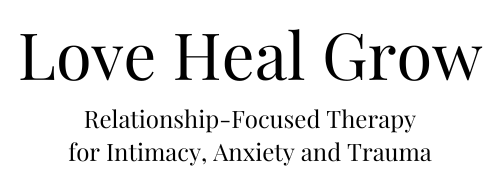
Self-regulation can be hard for anyone, but it’s especially hard for kids. For kids on the autism spectrum, kids with ADHD, or kids with any other neurodiversity, emotional self-regulation can be particularly challenging– but all kids need support in this area. Today, we’re going to talk about what self-regulation is, why it’s so important, and how you can help your child learn this important skill.
What Is Self-Regulation?
Emotional self-regulation is the ability to manage and control your emotions effectively. It involves recognizing, understanding, and regulating emotional responses in a way that promotes your mental well-being. This skill enables individuals to respond to situations in a balanced and adaptive manner, even in the face of stress, frustration, or adversity.
By the time we’re adults, we have a lot of practice leveraging this skill and feeling our feelings– but kids don’t. Emotional regulation also involves recognizing triggers and patterns that lead to emotional outbursts or instability; for kids, it can be really hard to recognize and name these feelings and patterns.
This means that as parents, it’s our job to help kids develop the skills they need for self-regulation. This will help set them up for success in the long run. But how do we help our kids develop these skills? First, let’s explain why self-regulation matters so much.
Why Is Self-Regulation So Important?
Self-regulation is a critical skill that greatly benefits children in various aspects of their lives. It involves managing and controlling one’s emotions, behaviors, and impulses in a way that fosters better decision-making, emotional well-being, and social interactions.
Self-regulation enables children to identify and manage their emotions effectively. It empowers them to navigate through difficult or frustrating situations without becoming overwhelmed. Children who can self-regulate their emotions are better equipped to cope with stress and anxiety, leading to improved mental health. Self-regulation is also closely tied to empathy and the ability to understand others’ perspectives. Kids who can manage their emotions are more likely to understand the feelings of others and respond empathetically. This makes it easier for them to build friendships and other positive relationships, which fosters cooperation and reduces conflicts.
When conflicts do arise, self-regulation equips children with the tools to resolve them constructively. They can stay calm, express themselves clearly, and seek mutually beneficial solutions when disagreements arise. This not only reduces the intensity and frequency of conflicts but also promotes problem-solving skills.
A child’s educational success in elementary school and beyond is also linked to self-regulation. It allows children to focus on tasks, resist distractions, and stay organized. Kids with good self-regulation skills are better able to complete assignments, study effectively, and engage in active learning, which leads to improved academic performance.
Self-regulation is also important for safety. Children who can self-regulate their behavior are less likely to act on impulse. This includes refraining from aggressive or risky behaviors and making more thoughtful choices. Self-control helps in making good decisions, and also helps kids understand safety rules and guidelines. A child who can self-regulate is more likely to follow safety precautions and make responsible choices, reducing the risk of accidents or injuries.
Finally, self-regulation contributes to a child’s overall wellness through resilience and empowerment. When children face setbacks or failures, they are better equipped to bounce back and learn from their experiences if they can self-regulate. They can adapt to changing circumstances and develop a growth mindset, which is crucial for personal growth and success.
Self-regulation empowers kids by giving them a sense of control over their own lives. They learn that they can influence their emotional responses and behaviors, which boosts their self-esteem and self-confidence. Ultimately, this contributes to a higher level of happiness and life satisfaction for children. They experience less frustration and stress and have more positive interactions with peers and adults, and it sets the foundation for a fulfilling and well-balanced life.
So what can we do to help kids learn this vital skill? Here are four key ways to help kids learn self-regulation.
1. Teach Emotion Recognition and Expression:
Start by helping children recognize and label their emotions. Use age-appropriate language to describe various feelings, and encourage them to express what they’re experiencing. You can say, “I see you look frustrated; would you like to talk about it?” or “You seem really happy right now!” This emotional awareness is the foundation of self-regulation.
Additionally, create an open and non-judgmental space for them to express their emotions. Let them know that all feelings are valid, and it’s okay to feel different emotions. Encourage them to talk about what’s bothering them and listen actively when they do.
2. Teach Calming Techniques:
One way to set kids up for success is to provide them with practical tools to manage intense emotions. Deep breathing exercises can help calm them down when they’re upset. Teach them simple relaxation techniques, such as counting to ten or taking slow, deep breaths. Physical activities, like jumping on a trampoline or squeezing a stress ball, can help release pent-up energy and reduce frustration. Encourage them to find activities that help them relax and regain control over their emotions.
3. Establish Routines and Predictability
Children thrive when they have a sense of order and predictability. Create daily routines that outline regular activities, such as mealtimes, bedtime, and homework. Having a visual schedule can help kids anticipate what’s next, reducing anxiety and impulsive behavior. Make sure to explain the schedule to them and involve them in creating it, if possible.
Clear expectations are also essential. Let them know what’s expected of them in various situations. Consistency in rules and expectations across caregivers and environments is crucial for self-regulation development.
4. Encourage Problem-Solving and Decision-Making
One of the best ways to teach self-regulation is to actually teach children how to think critically and make decisions instead of just expecting them to figure things out on their own. When they encounter challenges or conflicts, guide them through the problem-solving process. Ask questions that help them explore possible solutions and the consequences of their choices.
For instance, if a child is arguing with a friend over a toy, ask, “What are some ways you both can play with the toy without fighting? How would those ways make you feel?” Encourage them to choose the best course of action. This practice builds cognitive self-regulation and helps them understand that they have the power to decide their actions.
Incorporating these tips into your interactions with children can significantly support their self-regulation development. Remember that self-regulation is a skill that develops over time, so be patient and consistent in your efforts. By creating a nurturing and supportive environment and providing tools and techniques for self-regulation, you can help children build a strong foundation for managing their emotions and behavior effectively.
If your child is finding it challenging to manage their emotions, it may help to reach out to a mental health professional. These experts can provide tailored guidance to address your child’s unique goals, needs, and challenges, helping them develop effective self-regulation skills. If that sounds like your kid, don’t hesitate to reach out to us today at Love Heal Grow. We’re here for you both!
























